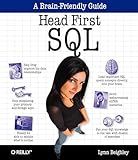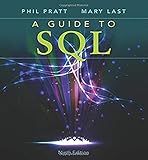Best SQL Tools to Buy in October 2025

SQL Hacks: Tips & Tools for Digging Into Your Data
- AFFORDABLE PRICING VS. NEW BOOKS-SAVE MONEY WHILE READING!
- QUALITY ASSURANCE: THOROUGHLY CHECKED FOR GOOD CONDITION.
- ECO-FRIENDLY CHOICE-REDUCE WASTE BY BUYING USED BOOKS!



SQL Programming QuickStudy Laminated Reference Guide



Practical SQL, 2nd Edition: A Beginner's Guide to Storytelling with Data



SQL Pocket Guide: A Guide to SQL Usage



RPG & SQL: Style and productivity: Guide to coding style, practices and productivity tools for the IBM i platform



SQL Practice Problems: 57 beginning, intermediate, and advanced challenges for you to solve using a “learn-by-doing” approach



Head First SQL: Your Brain on SQL -- A Learner's Guide



A Guide to SQL



SQL QuickStart Guide: The Simplified Beginner's Guide to Managing, Analyzing, and Manipulating Data With SQL (Coding & Programming - QuickStart Guides)


To convert a month in MySQL, you can use the MONTH() function. This function extracts the month portion from a date or datetime value.
Here's an example of how to use the MONTH() function:
SELECT MONTH('2022-03-15');
This query will return the month number, which in this case is 3.
You can also use the MONTH() function with a column name:
SELECT MONTH(order_date) FROM orders;
This query retrieves the month value from the 'order_date' column in the 'orders' table.
If you want to convert a month number into a month name, MySQL provides the MONTHNAME() function. Here's an example:
SELECT MONTHNAME('2022-03-15');
This query will return the month name, which in this case is 'March'.
Similarly, you can use MONTHNAME() with a column:
SELECT MONTHNAME(order_date) FROM orders;
This query retrieves the month name from the 'order_date' column in the 'orders' table.
These are some ways to convert and extract the month value in MySQL.
How to convert month to written representation (January, February, March) in MySQL?
You can use the MONTHNAME() function in MySQL to convert a numeric month to its written representation (e.g., 1 to January, 2 to February, etc.). Here's an example:
SELECT MONTHNAME(date_column) AS month_name FROM your_table;
Replace date_column with the actual column containing the month value, and your_table with the name of your table. This query will retrieve the written representation of the month for each row in your table.
How to convert month to epoch time in MySQL?
To convert a month to epoch time in MySQL, you can use the UNIX_TIMESTAMP function along with the DATE_FORMAT function. You will need to create a date string with the desired month and then pass it to the UNIX_TIMESTAMP function. Here's an example:
SELECT UNIX_TIMESTAMP(CONCAT('2022-', '01', '-01')) AS epoch_time;
In this example, the month '01' is converted to epoch time using the UNIX_TIMESTAMP function. Replace '01' with your desired month.
Note that epoch time is the number of seconds that have elapsed since January 1, 1970, at 00:00:00 UTC.
How to convert month to hours in MySQL?
To convert month to hours in MySQL, you can use the DATE_FORMAT() function along with the HOUR() function to extract the hour from a given date or timestamp.
Here's an example of how you can convert a month to hours in MySQL:
SELECT HOUR(DATE_FORMAT(NOW(), '%Y-%m-01 00:00:00')) * 24;
In this example, DATE_FORMAT(NOW(), '%Y-%m-01 00:00:00') formats the current date and time to the first day of the current month, with a time of 00:00:00. The HOUR() function extracts the hour from this formatted datetime. Finally, we multiply the hour by 24 to get the total number of hours.
You can replace NOW() with any specific date or column name that contains a date value that you want to convert to hours.
Note that this conversion assumes each month has a constant number of hours (30 days * 24 hours = 720 hours) and does not take into account leap years or variations in the number of days per month.
